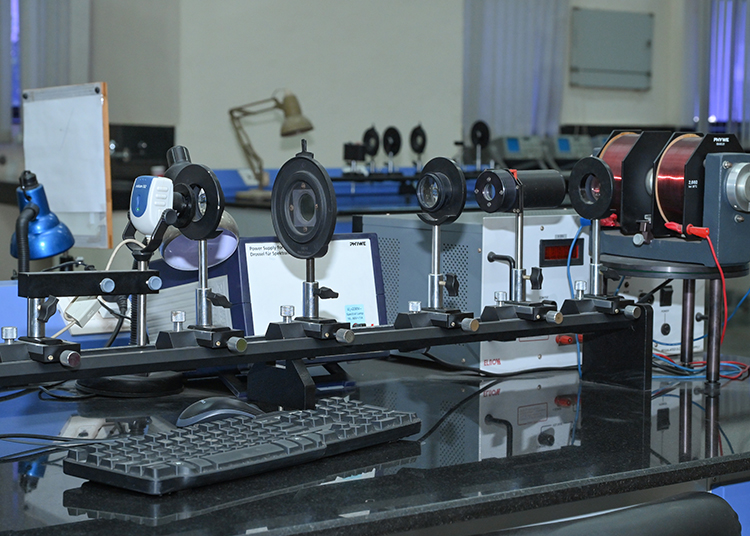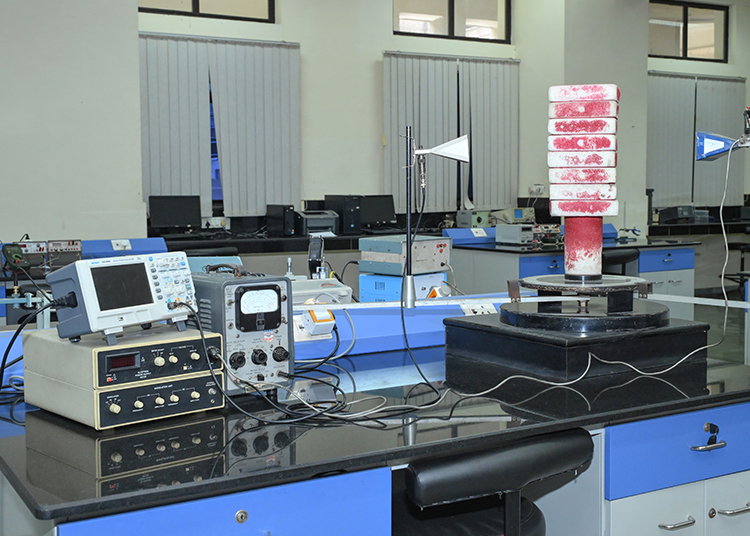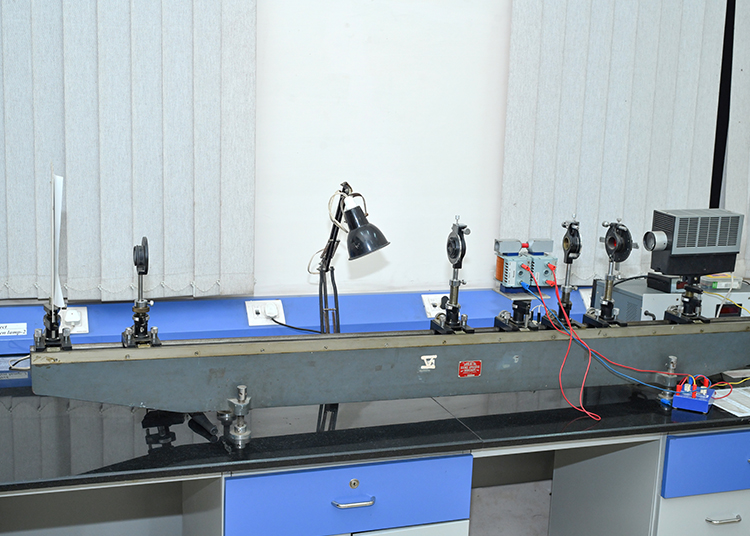About Lab
Welcome to PHY461/462 Experimental Physics Laboratory course. The “Experimental Physics” laboratory contains experiments from solid-state physics, modern physics, optics, nuclear and atomic physics topics. This laboratory will introduce you to advanced concepts of Physics through a set of nicely designed experiments. You will deal with a range of phenomena from Atomic spectroscopy, Nuclear radiation detection, Nuclear magnetic resonance, Crystallography, Klystron, Gunn Oscillator, superconductivity, phase transitions, Hall effect and its temperature dependence, magneto-resistance to optics and laser physics experiments. These also include classic experiments like the Millikan’s oil drop experiment, Concave grating spectrometer and Michelson interferometer etc.
The goal is NOT just to obtain a set of values as the results but to learn the physical phenomena and analysis of your measurements. M.Sc. Lab is the intermediate phase between under graduate and research lab where students as well as TAs get a qualitative experience. This lab also helps Ph.D students in their research work. The M.Sc lab currently runs for four days a week in both semester, with strength of approximately 100 students.Information
- Faculty Incharge: Prof. Soumik Mukhopadhyay
- Machine/ Equipment: Monochromator, Interferometer, Gamma Ray Spectrometer, 12-20 MHz NMR Spectrometer, Power supplies, Electromagnet, vacuum pumps, DMM, DSO, Frequency counter etc.
List of Experiments
1. Stefan's Constant
2. Faraday Effect Using sodium lamp
3. Faraday Effect using tungsten lamp
4. Phase Transition of BaTiO 3
5. Photoconductivity of CdS Photo- resistor
6. Planck’s constant using Cs cell
7. Electrical and thermal conductivity of metals
8. P-E Hysteresis
9. Hall Effect
10. Temperature dependence of Hall coefficient
11. Magneto-resistance and its Field Dependence
12. Magnetic Hysteresis using anchor ring
13. Magnetic Hysteresis with cobra interfacing unit
14. Ionic Conductivity of Alkali Halides (NaCl)
15. Characteristic X-Rays of copper
16. Electrical Resistance of a Conductor between 77 K and 300 K
17. Electrical Resistance of a Superconductor
18. AC Susceptibility of a high T c superconductor
19. Electron Spin Resonance (ESR)
20. Nuclear Magnetic Resonance (NMR)
21. Characteristics of Microwave generators (Klystron)
22. Study of Gunn oscillator
23. Electro Optic Effect
24. Kerr effect
25. Study of Thermo-luminescence of Color Centers in Crystals
26. G-M Counter, Counting Statics and absorption cross-section
27. Gamma ray Spectrometer
28. Beta Ray Spectroscopy
29. Millikan's Oil Drop Experiment
30. Bragg’s Diffraction with Microwaves
31. Electrical Conductivity and Band Gap Determination of Ge using two probe method
32. Electrical Conductivity and Band Gap Measurement of Ge using four probe method
33. Michelson Interferometer using a He-Ne Laser
34. Michelson Interferometer using a Sodium Lamp
35. Mach. Zehnder Interferometer
36. Diffraction of He-Ne Laser Radiation by 2-d Objects
37. Zeeman effect
38. Concave Grating Spectrometer, Rowland Mounting
39. Iodine Absorption Spectrum
40. Fluorescence of Uranyl Nitrate Hexahydrate (UNH)
41. Measurement of life time of photoluminescence



